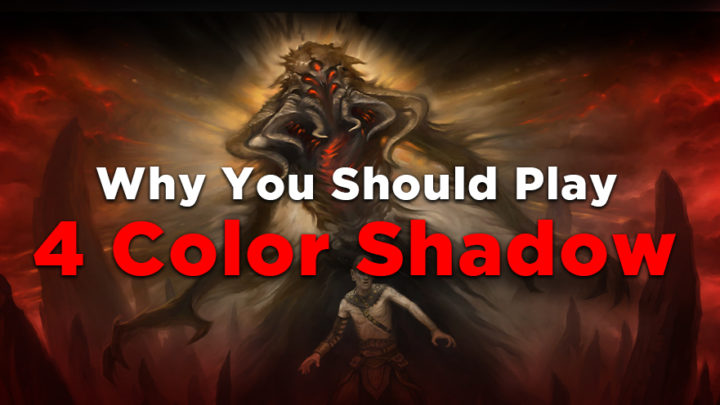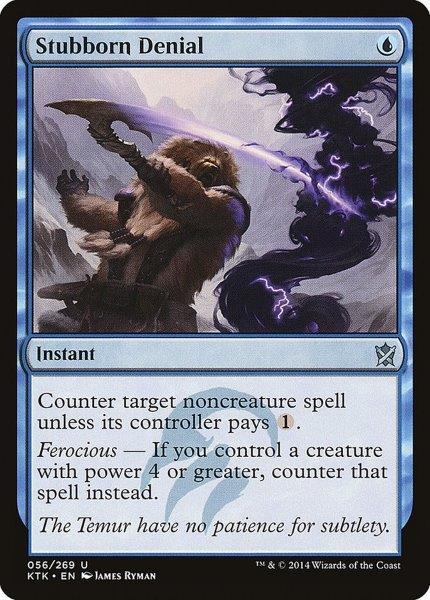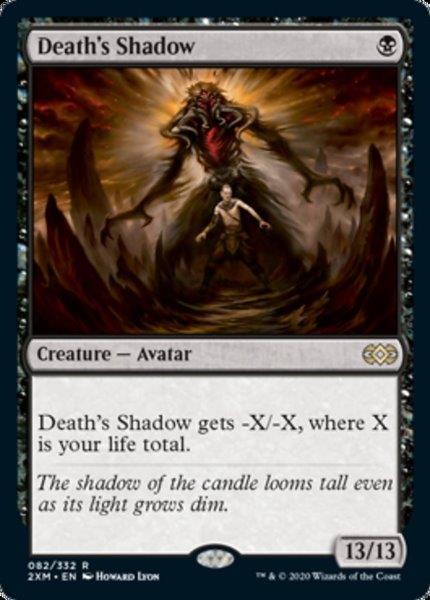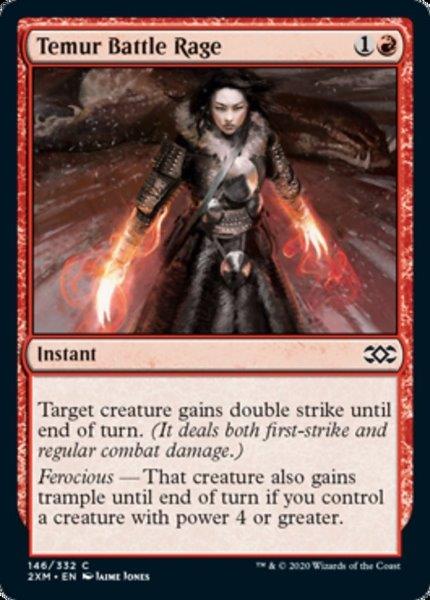Chances are if you’re a Death’s Shadow fan, or in tune with the movements of Modern, you’ve noticed a certain divide between Jund Shadow and Four-Color Shadow. Naturally, when two variations of a deck are close in power, there will often be questions about which version they should play, and today I’m going to make a case for Four-Color Shadow.
The Deck
First thing first, let’s take a look at what exactly Four-Color Shadow looks like. I’ve been testing the following list:
1 Blood Crypt
1 Swamp
1 Tarfire
SIDEBOARD
You might be looking at this deck thinking, “this looks familiar”, and you’d be right. This build of Four-Color Shadow has an incredible amount of overlap with Jund Shadow, In fact, there is only about a three spell difference between the two main decks. In Jund Shadow, you might see the fourth Inquisition of Kozilek, the fourth Fatal Push, and then one flex slot, which is usually something like a Lightning Bolt. In exchange for those cards, you get three copies of Stubborn Denial, giving you the critical ability to interact on the stack. Instead of putting your head down and trying to kill your combo or control opponents as fast as possible and hoping it works, Stubborn Denial lets you play a similarly aggressive game, but gives you another angle to disrupt the opposing game plan.
The sideboard has some additional changes, and all of the blue cards in the sideboard are a suite of additional counter spells, all with different uses. In these spots, Jund would have to focus ways to interact with the board, which doesn’t give them a ton of room to maneuver in matchups where the opponent is spell heavy. In my opinion, the biggest thing that you’re missing from the Jund Shadow sideboard that you don’t get in Four-Color Shadow is Choke or Boil. which are both powerful tools against the blue decks. I believe the addition of counterspells outweighs that loss.
Why Four-Color Shadow?
Four-Color Death’s Shadow attempts to blend the strengths of all of the Death’s Shadow variants into one cohesive strategy. The four main elements are creature sizing, stack based interaction, ability to quickly close the game, and the ability to pivot into different strategies in sideboarding.
Depending on the Modern metagame, creature sizing can either mean everything or nothing. If Lightning Bolt and small creatures are popular choices, having creatures that will survive a Lightning Bolt or getting into combat are valuable. Enter Tarmogoyf. With a pedigree dating back to the beginning of Modern, if you need a cheap but large creature, Tarmogoyf is the gold standard. Big enough to out-size Thought-Knot Seer and Reality Smasher with relative ease, while being cheap enough to wall off Monastery Swiftspear and Soul-Scar Mage, Tarmogoyf does it all. While 4/5 is the average size of Tarmogoyf in Four-Color Shadow, thanks to Mishra’s Bauble and Tarfire, it isn’t uncommon to see Tarmogoyf rumbling as a 5/6 or larger.
Tarmogoyf is more reliable than alternative options such as Gurmag Angler that you’d see out of Grixis Shadow. While Gurmag Angler has the upside to be a one mana 5/5 on turn two, it takes a good bit of work and requires a Thought Scour, which means that you don’t get to interact with your opponent on turn one, which against Izzet Prowess could be a game breaker. Tarmogoyf on the other hand lets you play a discard spell or Fatal Push a creature before playing Tarmogoyf, which you can always cast on turn two. Multiple Tarmogoyfs are often part of a strong, aggressive draw, but multiple Gurmag Anglers will often result in some of them being dead cards because you can’t fill your graveyard fast enough in the early turns.
Against Burn and Red based prowess decks, Tarmogoyf is an essential part of the game plan. Forcing your opponent to extend their hand to try to get damage either through or around the Tarmogoyf is a key way to maneuver the game into a spot where you can safely leverage Death’s Shadow as a threat. This will end the game in short order once it is in play. Not only is Tarmogoyf an excellent card in its own right against these aggressive decks, but it brings up the power level of Death’s Shadow as well, what a team player.
Stack based interaction waxes and wanes in importance in Modern, but will always have some baseline value. Right now, I believe that having access to Stubborn Denial and the suite of sideboard counterspells lets you have game against a wide variety of strategies that Jund Shadow just can’t interact with as well.
This last weekend we saw a rise in classic Burn decks doing well while Prowess slid slightly. Not to say that Prowess lost on the weekend, but it seems that some of the Soul-Scar Mage players have opted to make the swap to Goblin Guide, likely to try and side step the increased removal around Modern, which was a response to the popularity of Prowess. What does this have to do with Stubborn Denial? Stubborn Denial is more critical in the Burn matchup than the Prowess matchup for two reasons. First, Burn tends to have a slightly higher curve option for Eidolon of the Great Revel, Lightning Helix, and Boros Charm, making it easier to artificially constrain their mana with Stubborn Denial that it would be with the glut of one mana spells that Prowess has. Second, countering spells against Burn is more impactful than it is against Prowess simply because of the Prowess mechanic. Soul-Scar Mage doesn’t care if Lightning Bolt resolves, just that it was cast to gain the extra point of power.
Combo decks that rely on expensive spells to win the game, like Scapeshift and Ad Nauseam, are easy prey for Four-Color Shadow because they both rely on resolving one important spell to win the game. Thoughtseize is great in those matchups, but it does have the age-old weakness of not protecting you from the top of the opponent’s deck. However, when you combine Thoughtseize/ with Stubborn Denial and a threat you end up putting combo decks in a situation where it is incredibly difficult for them to win. This package of disruption punishes players for holding spells while covering you if they decide to run them out aggressively.
The counterspells in the sideboard let you customize your interaction suite, depending on what you’re playing. The extra Stubborn Denial lets you fortify against anything that is spell heavy and has varying mana costs or spell types. Ceremonious Rejection is an all-star against both Eldrazi Tron and Mono Green Tron. Disdainful Stroke has a surprising amount of coverage against the Urza’s Tower decks, Scapeshift, Ad Nauseam, Primeval Titan decks, and UWx Control. Aether Gust is surprisingly flexible from interacting with both Red aggressive decks and Primeval Titan decks while being incredible against Gruul Mid-range.
The ability to turn the corner and close out a game quickly is one of the selling points of playing Death’s Shadow instead of Jund. Against interactive decks such as Bant Control, there are two strategies which you can implore: try and grind through them or try to go under them with a tempo plan. Thanks to the size of Death’s Shadow and Tarmogoyf being so far above rate, combined with both hand disruption and counterspells, you can effectively leverage the mana advantage generated against their more expensive spells to win a tempo-based game.
It is no secret that Temur Battle Rage plus a large creature is a lethal combination, but that is the bread and butter of nearly every Death’s Shadow strategy. Whether Temur Battle Rage is being used to punch the last chunk through a board of Humans, or stealing a turn against Burn or a combo, it effectively reduces the total number of turns that occur in the game on average. Shorter games are important for Four-Color Shadow because it lets you continue to leverage your cheap spells later in the game to keep that vital mana advantage and convert more double spell turns than your opponent.
Reverse Reverse!
One of the underappreciated strengths of Four-Color Shadow is the ability to present anywhere from Sultai Shadow, to Jund Shadow, to a full Four-Color Shadow deck for game two, all depending on that matchup. Sultai Shadow gets brought up in conversation reasonably often when Stubborn Denial is powerful. The downside here is losing access to Temur Battle Rage, which is also a powerful tool in combo matchups. Similarly, Jund Shadow is often discussed when Modern rewards aggression. Because of how wide Modern is, you’ll frequently get caught in matchups where you’d be rewarded for having Stubborn Denial. Four-Color Shadow allows you to choose which color scheme is best for the game at hand. Some examples are boarding out all of your counterspells against Humans to board into a removal heavy Jund Shadow build. Against a deck like Bant Control, I’ll sideboard out Temur Battle Rage, Tarfire, and Ghor-Clan Rampager and board in Wrenn and Six and Kolaghan’s Command to stay four colors, but tilt the matchup a bit. When playing against other Death’s Shadow decks, I’ll often board out all of the red cards and board in some additional removal spells and a Kolaghan’s Command to be effectively a Sultai deck.
Conclusion
Overall I believe right now is a perfectly reasonable time to pick up Four-Color Shadow. With the rise of Wilderness Reclamation control decks, the return of Ad Nauseam and Tron in the last week, it’s only poised to get better. Customization is key, and Four-Color Death’s Shadow allows you to move around your interactive elements to target specific decks. Seeing a lot of Prowess, add another Fatal Push. If Eldrazi Tron worries you, Assassin’s Trophy is a good option. As always I’m happy to answer any questions that you may have, just reach out to me on Twitter @RappaciousOne, I’ll see you all next week!

Michael Rapp is a Modern specialist who favors Thoughtseize decks. Magic sates his desire for competition and constant improvement.





